Defence of Kelat-i-Ghilzie 1842, Gunner 4th. Co. 2nd. Batt. Arty. correctly script engraved
£4,850.00
Out of stock
Defence of Kelat-i-Ghilzie 1842,
Gunner James Clarke, 4th. Co. 2nd. Batt. Arty.
Correctly script engraved
After the massacre of General Elphinstone’s Army during the 1842 retreat from Kabul, the only forces left in Afghanistan were at Jalalabad and Kelat-I-Ghilzie, a fort between Kabul and Kandahar. The garrison numbering 932, (55 Europeans and 877 Natives), consisted of Shah Shoja’s 3rd Infantry Battalion, three companies of the 43rd Bengal Native Infantry, forty European gunners, sixty Bombay Sappers and Miners, and eight British officers, all under the command of Captain John Halket Craigie. All were members of the Indian Army, with no British Army units present. For most of the winter, the garrison was besieged under very difficult circumstances. Finally, on 19 May 1842, a force was sent to draw off the garrison and relieve them from their post. Before the relief force arrived, the garrison repulsed one final major attack by some six thousand Afghans on 21 May 1842. A few days after this attack the garrison was finally relieved by the forces under Sir William Nott, on 26 May 1842.
